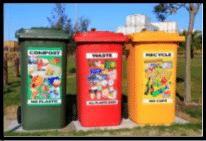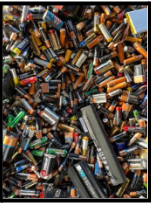Introduction
Recycling is the process of collecting used products which is then processed in a recycling machine so that it turns into a new product which will be beneficial to earth. Products which are recycled are iron, steel, aluminium cans, glass bottles, paper, wood and plastic. Everyone in a country should personally contribute to recycling, like giving the daily newspaper and other things not needed to scrap dealers so that it is recycled.
Terms of Recycling
- Primary Recycling–It is the process of turning one useful thing to the same thing like converting soda cans to soda cans.
- Secondary Recycling–It is the process of changing one to other things like steel to steel rod.
- Tertiary Recycling–It is generally used in chemical factories, it requires breaking of materials to form a new product.
Things to Recycle
Newspaper Recycling
It is said that recycling newspapers can save up to 30-60% of energy used for making the newspaper again. To make a new newspaper we have to cut so many trees so we can reduce the cutting of trees by recycling.
Cardboard
It is said that recycling cardboard will save up to 24% of energy. Again by recycling the cardboard trees can be saved which is very important for earth.
Paperboard
Paperboard is used in shoe boxes, cereal boxes which are most probably recycled to produce new products that can save a good amount of energy.
Aluminium Cans
Recycling helps to recycle aluminium cans to produce new cans which can save 95% of the energy which can be very useful.
Steel Cans
Recycling can save 69% of energy. Steel is more successful than other product’s recycling.
Glass Container
Materials used after the recycling are 100% used which is quite beneficial so that we don’t have to manufacture the products again and again.
Magazines
All magazines that are catalogs and glossy magazines can also be recycled totally and used for a new product.
Types of Recycling
Mechanical Recycling
This type of recycling is done to make packages, garbage bags, floors, car parts, etc.
Energy Recycling
It is the process of converting plastic to thermal and electrical energy. Again the recycled one is changed to a new product.
Chemical recycling
It is the most expensive and complex process of recycling. It is the same process of converting one product to another one.
Benefits of Recycling
- It conserves natural energy and resources like wood which can be saved during production of paper and boards. It also saves fossil fuel which is used for manufacturing of many products.
- It protects our ecosystem and wildlife as people kill many of the wildlife for making products like showcase materials(e.g fur clothes) which are gotten from many animals’ skin and disturb our ecosystem.
- It automatically reduces the demand for raw materials as we can recycle the previous products. So the producer will not need the raw materials like wood which comes from trees and skin of animals.
- It saves energy as 95% of energy is used for making aluminium. 70% of energy is used for making products like steel. The energy which is used by a machine can be reduced to 0 if products are recycled.
- Recycling produces less carbon emission comparatively by making the product.
Disadvantages
- It can be a very costly process which sometimes doesn’t suit our environment.
- It needs proper planning to recycle a product.
- It can lead to fluctuations in the market price that is in our economy.
- Products which are recycled can be of low quality.
- It is said that the factors used for recycling are mostly unsafe as the factory is full of dangerous energy which can risk a person’s life.
Conclusion
Recycling of products can give us advantages as well as disadvantages but for paper production and some other products which use our earth’s resources in a large amount, recycling is a must process for these types of products. Eventually, we are responsible for protecting mother earth from damages like deforestation so that we humans and all other living organisms can live as earth belongs to everyone.






